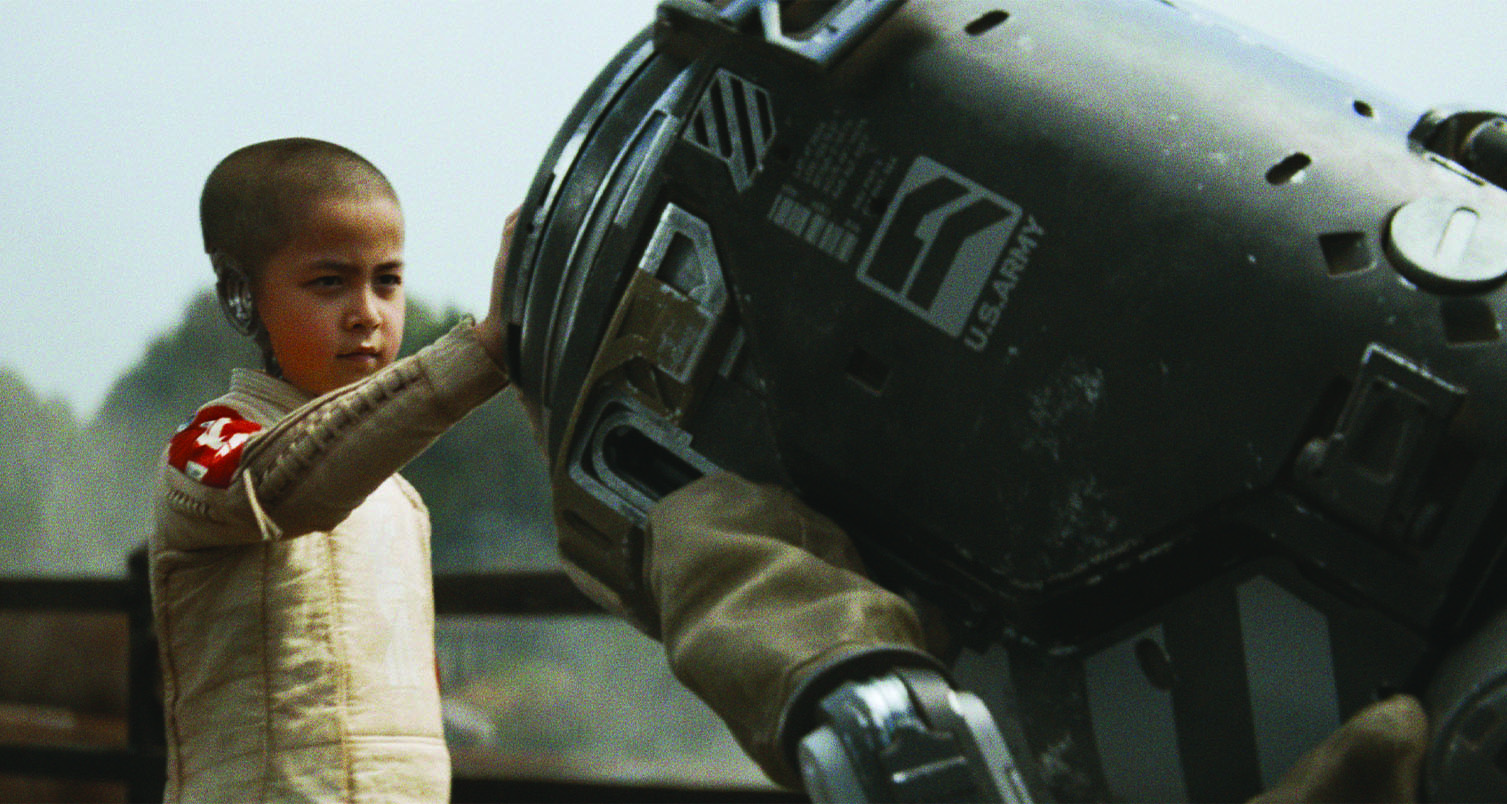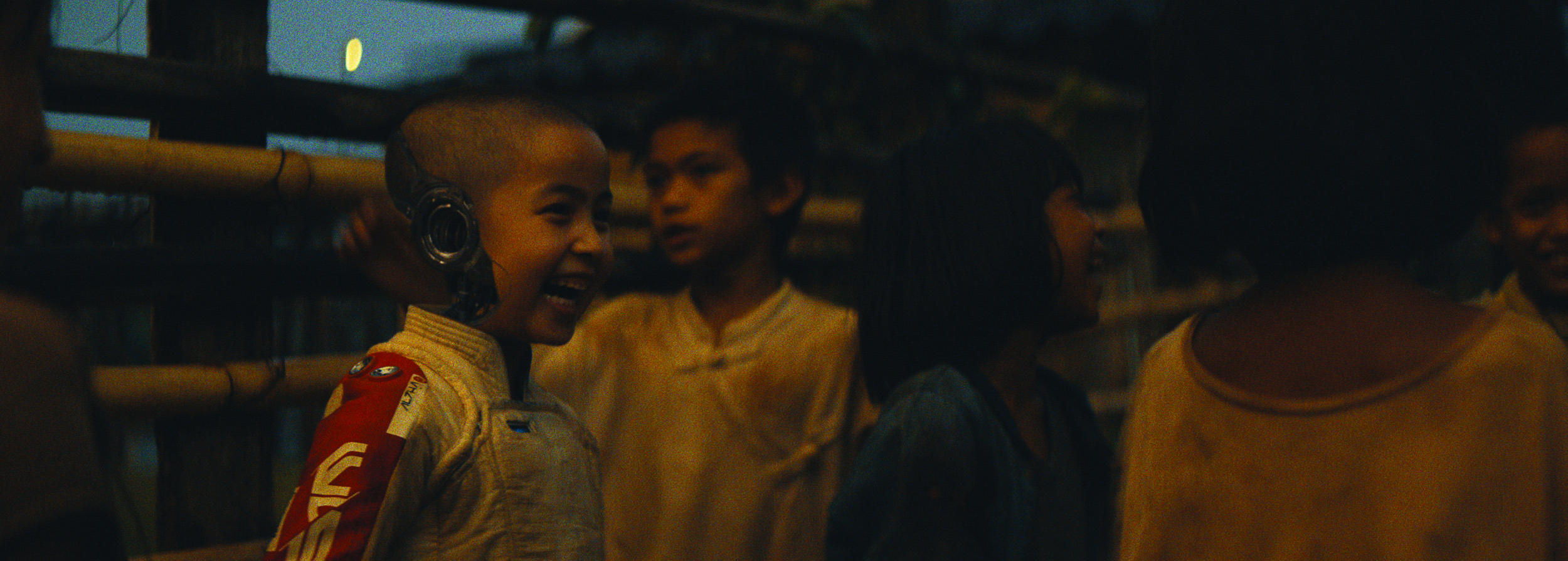
I must have seen Oscar-nominated movie The Creator half a dozen times and failed to notice a subtle VFX detail that has now made me want to see it all over again. In an interview with our sister magazine 3D World ILM animation supervisor Christopher Potter shared an insight into what the spinning discs inside the Simulants' heads really mean.
"If a Simulant was in a high-stress scenario, we'd amplify the movements to emulate how they were feeling," says ILM's Christopher Potter. "As opposed to a quiet scene where it's almost like breathing, for the scenes where they're interacting with technology it goes extra fast again."
So the speed of the motion of the rings situated in the heads of Simulants reflected their emotional state. It's a clever little visual device to sublimially share with us how the android is feeling. No wonder this sci-fi movie is up for an Oscar, and you can read more in our feature on making the VFX of The Creator.

The process to achieve the look of each Simulant's internal rings was trial and error, as ILM animation supervisor Michael Midlock explains. "We had a total of four cycles that we wanted to use," he says. "The inner ring was supposed to be the cognitive thinking. One of the rings was tied to Alphie's eye movement. We tracked her eye darts in the plate so the rings were reacting to that.
The inner ring was supposed to be the cognitive thinking. One of the rings was tied to Alphie's eye movement
Michael Midlock,ILM animation supervisor
"We did previs for a couple of different cycles and started putting them into shots, casting them where we thought the emotions fitted. But then, of course, there was always the work afterwards.
"You start art directing it and saying, 'Too slow. Too fast.' It was always meant to support the plates. I was happy with how it turned out when I saw the final product. I don't think it calls attention to itself. It feels natural. That's what we wanted it to look like."
The Creator made headlines at the end of 2023 when it was revealed the movie's VFX cost just $80 million but looks like $300 million film. The VFX team on the movie made good use of its budget to bring the sci-fi fable to the screen with a sense of realism. This new detail is just another insight into how the team created an emotional connection to its digital VFX.
If you're keen to see examples of how more great VFX movies were made, read my interview with MPC's Charley Henley on making Ridley Scott's Napoleon. If you're inspired to get into VFX, read our guide to the best laptops for 3D modelling and get up to speed on the software with our explainers for Houdini and ZBrush.
This interview originally appeared in 3D World magazine, the world's leading digital art, CG and VFX magazine. 3D World is on sale in the UK, Europe, United States, Canada, Australia and more. Limited numbers of 3D World print editions are available for delivery from our online store (the shipping costs are included in all prices).







